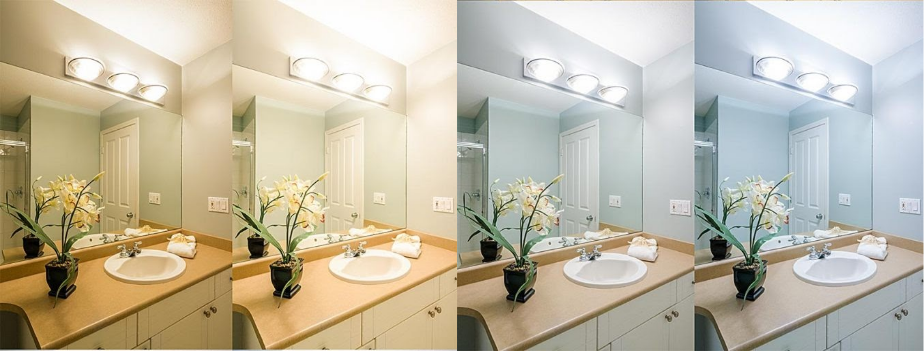What You Need To Know About Lighting Colour Temperatures
Posted by Zest Lighting on 6th Jul 2023
Revamping the look and feel of a space needs consideration in many things, including the colour of your lights. Now, that gets a little tricky - how do you know what light colour to choose for your room?
With tons of options available in the market, you’ll probably want some expert advice from experienced designers. But no worries, we’ve listed down the essential things you need to know when choosing the colour temperature for your room lights.
The Gist About Colour Temperatures
Let’s start with the basics. A bulb’s colour temperature, in simple terms, denotes the shade of the white light it emits. The visual effect it produces is categorised in a lighting scale measured in Kelvin (K). In this scale, the lower the number, the warmer the white light’s effect appears.
Now you know a bit about colour temperature. Here are some misconceptions to correct before moving on:
- Note that colour in colour temperature is not related to the bulb’s coloured appearance, like how party and Christmas lights have different bulb colours.
- Also, although it’s called colour temperature, it doesn’t relate to the heat a bulb generates.
Splitting Up the Scale
As previously mentioned, a bulb’s colour temperature is often classified on a scale. Each point in this scale belongs to a group that describes its main visual colour effect and the mood it introduces when used in a room.
Very Warm Light
Light bulbs that emit a very warm light visual effect has colour temperatures up to 2200 K. These bulbs are often used to set a cosy and warm mood or ambience to a space. They emit a red to yellow-orange light effect and are often used as accent lights in bedside lamps and romantic settings.
Warm Light
Bulbs under the warm light category have colour temperatures up to 3500 K. These bulbs also set a relaxing and inviting atmosphere. Still, they give off a white-yellow light tone rather than a yellow-orange one, introducing some clarity and brightness to the space. Thus, it’s suitable lighting for living rooms and lobbies, where a relaxing and favourable atmosphere is necessary.
Natural White Light
The lights under the natural white category emit, as the name suggests, a pure white glow. Also called neutral white, these bulbs that fall under the 3600 K to 4500 K are often used in areas where productivity is necessary. These areas include but are not limited to dining rooms, hallways, stairways, and outdoor paths.
Cool White Light
The cool white range starts at 4600 K up to 5600 K on the colour temperature scale. Bulbs in this selection have a white with a tinge of blue visual effect. These bulbs are effective for places that demand a need for concentration and productivity, like libraries, offices, kitchens, cars, and studies.
Daylight
With beaming lights as bright as sunlight during the day, bulbs in the daylight scale (5700 K up) emit white light with excessive glare. As a result, they are often used as leading lights in factories and warehouses, prioritising the brightness of an area rather than clarity of details.
Got your pick?
With all these things listed out, you at least now have a general idea of what colour temperature to pick for your room. Make sure to keep in mind the purpose and mood of your room when choosing the correct bulb for you. It might not be easy for beginners, but you will get the hang of it once you’ve planned everything out. Cheers to your new lights!



